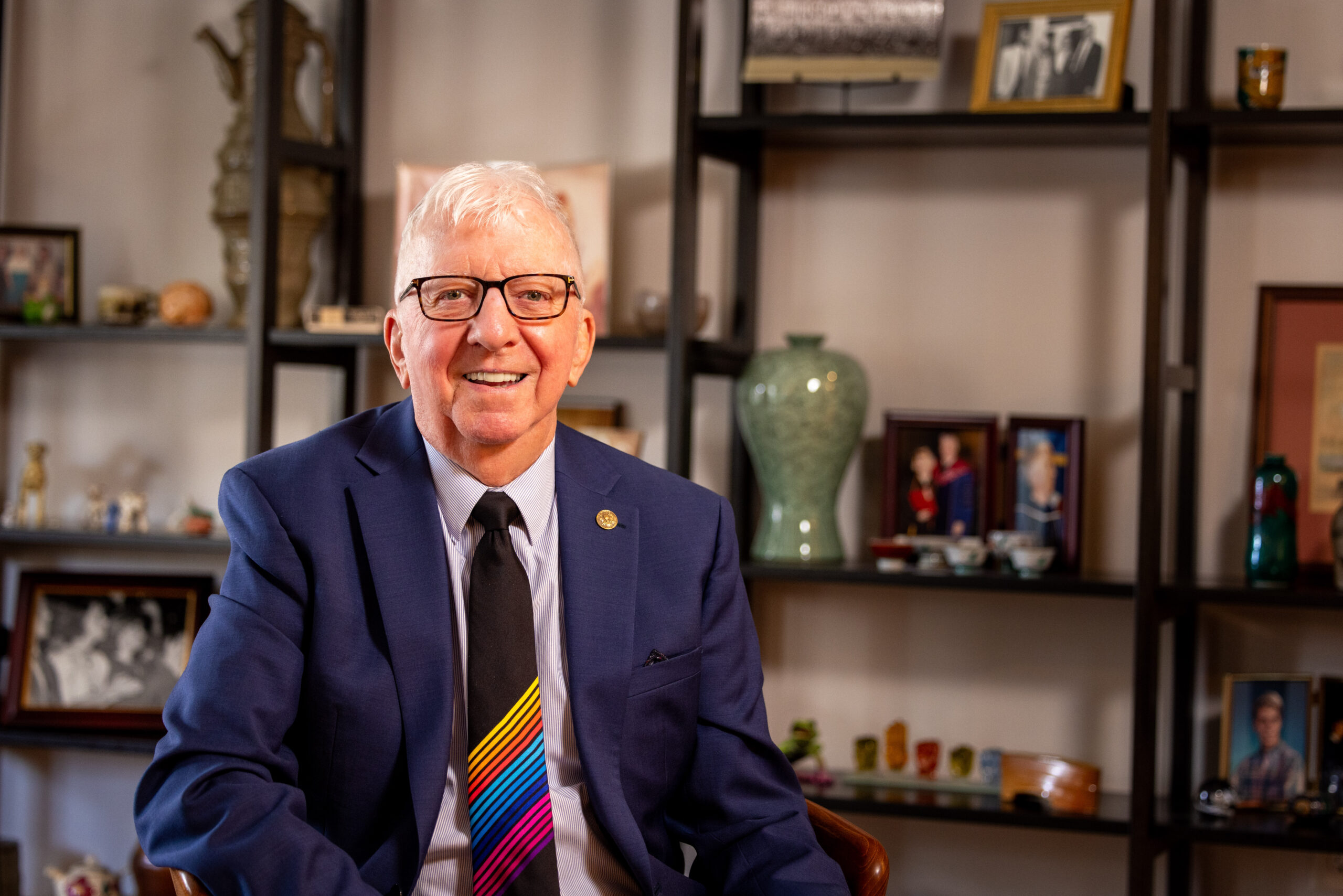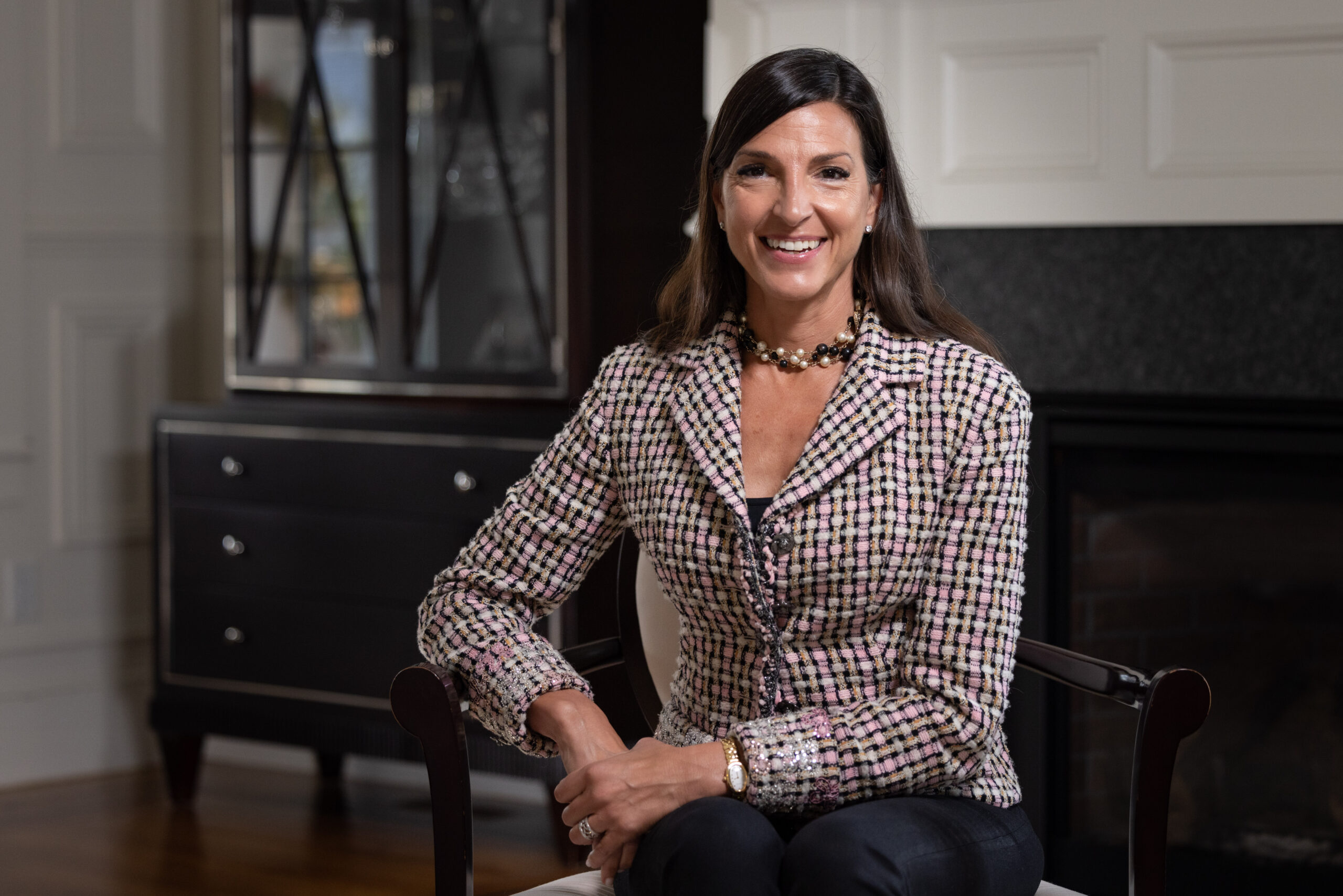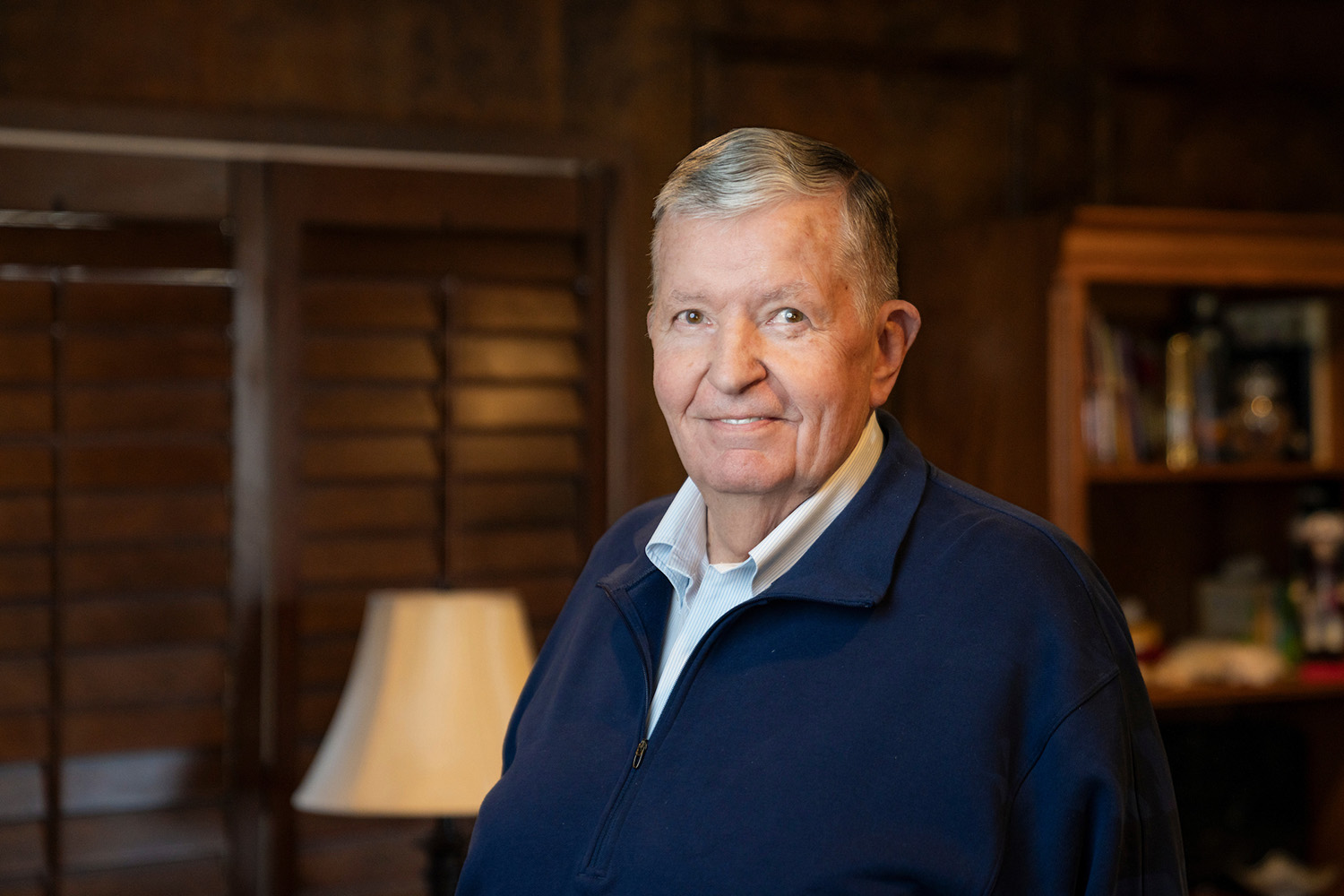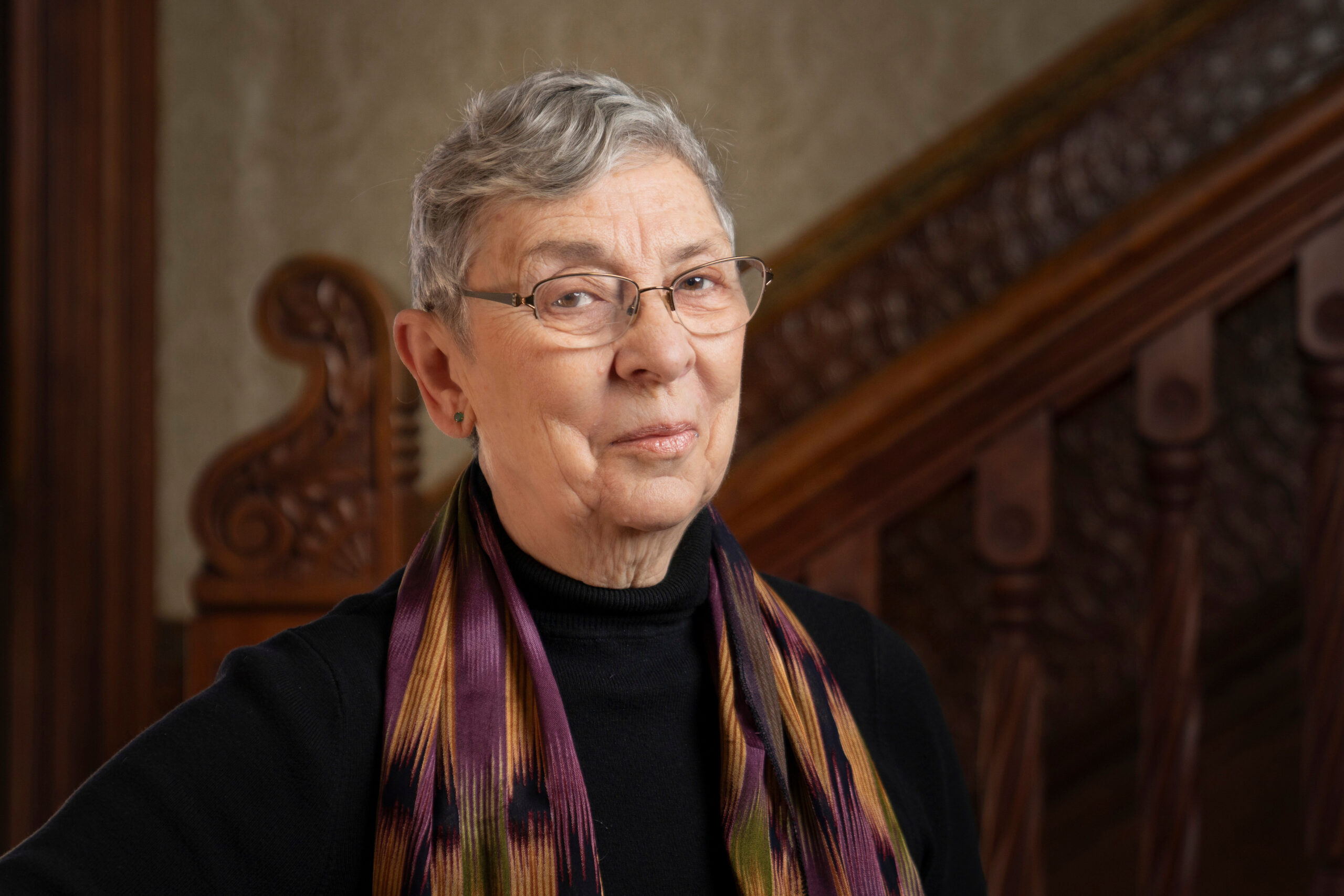2025 Honorary Degree Recipients
The University of Utah is proud to announce the following honorary degree recipients during the 2025 University Commencement ceremony.
King Jordan
Doctor of Education
A motorcycle accident changed the trajectory of King Jordan’s life.
Raised in the small town of Glen Riddle, Pennsylvania, Jordan joined the U.S. Navy after high school graduation and served four years. After that accident, he woke up in the hospital, profoundly deaf at the age of 21.
“Becoming deaf changed my life for the better. I grew up with normal hearing and was a very average student in high school—all five years of it,” he says. “After the accident, I quickly realized that if I wanted to make anything of my life, I would need an education.”
He enrolled at Gallaudet University—the world’s only university where all programs are designed and delivered for the deaf and hard of hearing. He earned a bachelor’s degree in psychology in 1970. The next year, he graduated with a master’s in psychology from the University of Tennessee and followed that up in 1973 with a PhD.
Jordan joined the Gallaudet faculty, eventually becoming the Department of Psychology’s chair and then the dean of the university’s College of Arts and Sciences. Along the way, he worked as a research fellow at Donaldson’s School for the Deaf in Edinburgh, Scotland; an exchange scholar at Jagiellonian University in Krakow, Poland; and a visiting scholar and lecturer at schools in Paris, Toulouse, and Marseille, France.
In 1988, he was appointed the university’s first deaf president.
“Some were inspired by my appointment; others were doubtful,” he told a group of parents gathered at a symposium on early childhood hearing loss in Florida in 2006. “Some—including some deaf people—didn’t believe a deaf person could succeed as the president of a university and expected me to fail. Why would deaf people think that? That’s part of the power of attitudes in society and the dynamics of oppression. When people are told all of their lives, and sometimes for generations, that they cannot do certain things, or that they cannot have the same aspirations as others, some come to believe it.”
Jordan served as Gallaudet’s president until 2006, boosting the institution’s national and international profile and serving as a tireless advocate and spokesman for deaf and hard of hearing people around the world. Since leaving that post, he has continued to speak about and in support of the deaf community.
A recipient of a dozen honorary degrees, Jordan tells the Class of 2025 to be bold. “Higher education is life changing. Take risks. Don’t be timid or afraid. You have achieved something very special by graduating from the University of Utah. Act like it!”
“The optimism I have for the future is what I see in younger people,” he adds. “The world has changed so much since I was a university student and will undergo more and more change going forward. Young people are living through these changes and will be able to adapt to them and the new challenges.”
I. King Jordan served as the first deaf president of Gallaudet University from 1988 to 2006. Jordan’s leadership heightened public awareness of the importance of Gallaudet’s educational contributions to the nation and the world. Over his tenure, he served as an international spokesperson and advocate for deaf and hearing impaired people. Jordan continues to speak at events across the country.
Julie A. Lassonde
Doctor of Engineering
 You could say Julie Lassonde’s life started at the University of Utah.
You could say Julie Lassonde’s life started at the University of Utah.
She was born in Salt Lake City while her parents, Claudette MacKay-Lassonde and Pierre Lassonde, were students at the U. She studied for a master’s degree in nuclear engineering; he got his MBA, both graduating in 1973.
The young family moved on to San Francisco and then eventually back to Canada. But a pivotal connection was made.
So was the family’s passion for engineering. Lassonde and both her parents, her brother, her daughter—all are engineers. “I joke with my brother that my mom said, ‘Oh you can be anything you want…any kind of engineer that you want.’ And so it was, de facto, not really a choice in my family,” Lassonde says. “You were going to be an engineer.”
Lassonde picked civil engineering, earning her undergraduate degree from Queen’s University (Canada) before embarking on a 20-year career in mining engineering and financial services. That time in the field and her mother’s dedication as a trailblazing Canadian engineer (she was the first woman president of the Professional Engineers Ontario and a patient mentor for up-and-coming women engineers) now feed Lassonde’s commitment to encouraging and mentoring women pursuing STEM degrees and careers.
“There was always a sense of learning in my family,” Lassonde says. “Sunday mornings in our house were actually really quiet because we were all reading—whether it was the Sunday newspaper, the latest book, The Economist.”
“I’m always wanting to learn more.”
Together, her parents created the Lassonde Family Foundation, based on three pillars—education, the arts, and community. After launching a New Venture Development Center at the U in 2002, a Lassonde family gift formed the foundation of the Lassonde Entrepreneur Institute at the U in 2006.
“Mom and dad always wanted to give back to the U, because it was so instrumental in both their lives. It launched their careers in really important ways,” she says.
Now dedicated to managing the family’s philanthropic efforts along with her father, Lassonde returned to school for an executive-MBA and, mostly recently, a master’s degree in art history from Brown University. Both degrees guide her philanthropic work, Lassonde says, but she never expected to love art history as much as she does.
She is currently chair of the Board for the Lassonde Art Trail, Canada’s largest public art trail, set to open in Toronto next year. She is on Brown University’s Engineering Advisory Council. She has served on the board of Canada’s National Gallery, the Canadian Engineering Memorial Foundation, York University, and the Royal Ontario Museum.
And each year, she’s anxious to receive the latest innovation from a Lassonde Entrepreneur Institute student—from floating wooden sunglasses, to a pair of ski goggles she still wears on the slopes, to hot mango sauce.
“My one piece of advice comes from the great mind of Ted Lasso,” she says. “Be Curious. Being curious combined with critical thinking can lead to wonderful and weird places. Don’t ever stop. Don’t ever stop wanting to learn.”
Cecil Samuelson
Doctor of Science
Cecil Samuelson likes to say that he bleeds purple.
It’s the perfect blend of University of Utah red and Brigham Young University blue—a fitting color for a man who has dedicated his life to Utah’s public and private universities.
The son of a Salt Lake City public school teacher and a University of Utah administrator, Samuelson learned quickly the value of education. As a child he watched his father working nights, second shifts at the ice plant, to earn his PhD.
“It became very evident to all of us kids that education was a big deal and an important thing,” he says. “We didn’t really realize that it was the sacrifice that it turned out to be for our parents.”
A slow starter, Samuelson still credits his third-grade teacher, Ms. Enid Brown, with helping him master reading. By the end of the year, he’d progressed by two grade levels.
After graduation from Granite High School, Samuelson enrolled at the U, unsure of what to study. The aptitude and interest tests said engineering. But a chance encounter with another missionary—a young doctor—while on a mission for The Church of Jesus Christ of Latter-day Saints changed that trajectory. When he returned to the university, Samuelson shifted his focus, determined to go to medical school. He finished a bachelor’s of science degree in 1966, a master’s degree in educational psychology in 1970, and his MD, also in 1970.
After completing an internship, residency and fellowship at Duke, Samuelson expected to start a career as an academic physician—focused on teaching med students. But a call from the University of Utah in 1973 lured him back to a position as dean of medical school admissions, with a part-time position caring for patients in rheumatology.
He had a plan to move on, but always found a reason to stay. Samuelson was first dean of admissions, then the medical school, then vice president for health sciences. During his tenure, Samuelson advised on moving Primary Children’s Hospital to its current perch on the hill above campus, solidifying the longtime collaboration between U of U Health and Intermountain Healthcare. Then in 1990, Samuelson left the U for IHC, where he worked as senior vice president and president of IHC Hospitals.
In 1994, Samuelson was called to be a member of the LDS Church’s First Quorum of the Seventy, a post he held for 17 years. In 2003, he was named president of BYU. He waited a day to tell his wife, Sharon.
“She was a very avid Ute,” he said. “When I finally told her, for half an hour, she thought I was kidding.”
He stayed in the job for 11 years, building friendships with U presidents Bernie Machen and Michael Young. Together, the two schools’ leaders made a dedicated case for higher education, research and collegiate athletics in Utah.
“I’m asked occasionally by young people, ‘I’d like to have a career like yours, what do I do?’ And I don’t have a good answer for that, because I really kind of fell into all of these things. I just happened to be in the right place at the right time. But I had an amazing opportunity to do a number of things that have been very interesting. I hope I haven’t messed up too badly.
“It is not all planning or strategic on my part, but it’s been a great ride for me.”
Linda C. Smith
Doctor of Fine Arts
 Linda Smith’s path in life was set at the age of four.
Linda Smith’s path in life was set at the age of four.
That’s the year her mother enrolled her in a Virginia Tanner creative dance program, and it set the course of her life.
“Miss Virginia gave me a voice and self-confidence,” Smith says. “She validated who I was and helped me find a way to express myself, solve problems, invent, and how to connect to the world. The process gave me a voice. Dance gave me purpose.”
“I don’t want to imagine a life without dance. I really can’t.”
There’s no way to separate dance from Linda Smith’s life. As a child, in the mid-1940s and 50s, she performed and toured nationally with The Children’s Dance Theater, attended Utah symphony concerts, danced in university theater productions on the Kingsbury Hall stage, took dance workshops at the U of U.
She promised her father, who was nervous she would leave for New York City and never look back, that she would spend at least two years at the University of Utah. And in 1964, she was one of the first graduates of the University of Utah’s new fine arts-based dance program.
A few years later, Smith was one of eight recent graduates invited back to the U to realize Tanner’s dream of a professional Utah-based dance company, using seed grant funding from the Rockefeller Foundation. The fledgling Repertory Dance Theater (RDT), the first of its kind, was based in an old barracks building on the health sciences campus.
“It was amazing. We were to become an artistic democracy,” Smith says. “It was very brave and daring for the University of Utah to support that idea. It was a very unlikely place for a group of dancers to experiment and explore a new model for dance companies. But we helped change dance in America. We became the first successful modern dance repertory company in the nation.”
In 1983, the barracks was coming down and Smith, the company’s new artistic director, needed to find a home. She shared her vision with Salt Lake County leaders and Utah philanthropist Izzy Wagner, and a public-private partnership was developed to create the Rose Wagner Performing Arts Center, a vibrant community facility in downtown Salt Lake City.
Through it all, she danced and taught, experimenting and innovating. At the “Rose,” RDT developed programs for children and their families, seniors, and a community school. In the 1990s, Smith commissioned works that focused on Utah wild lands and ecosystem. The company received an EPA grant to go into public schools and teach through dance about landscapes, water and air—sustainability.
Now, still directing RDT and teaching, Smith says she wants students to have courage.
“We need you. We’ve given you a lot of problems to solve. We’re counting on you,” she adds. “Tap into your creative energy. Be daring. Every morning, do a little victory dance to help the sun rise.”
